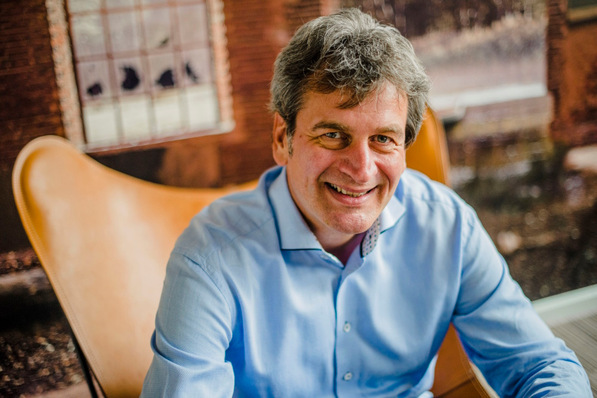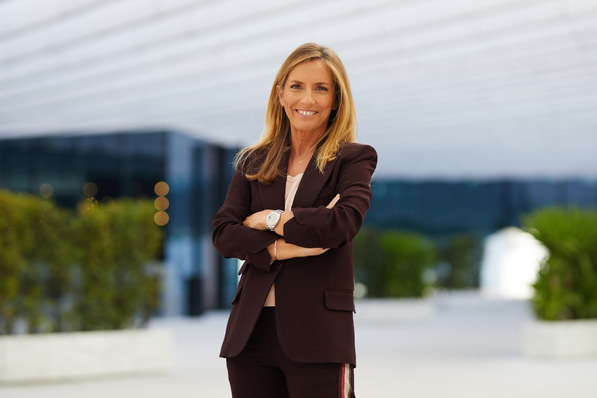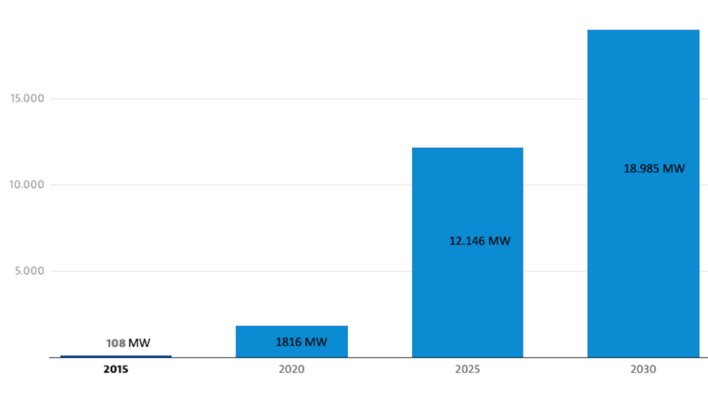The energy industry is working hard to ensure that climate targets and independence from fossil fuels are within reach in the not-too-distant future. By this point, most people would have to agree that the energy world of tomorrow is renewable, decentralized and digital. But to make this a reality, work to improve the digitalization and networking of the energy system needs to continue at pace and in various sectors. Digital solutions include energy system and grid monitoring and applications that can be used to connect decentralized systems or distribute electricity locally.
And the development of energy management systems that analyze collated energy data and identify potential for optimization are a priority for plenty of start-ups and young companies that are committed to playing an active role in the energy transition. Their solutions appeal to anyone with an interest in the energy sector – from end consumers to grid operators.
Heating cost savings with digital meter reading systems
Hardware and software provider SigmaHeat is one company developing solutions for the supply of energy to buildings. This is a key area given that around 35% of energy consumed in Germany falls under this category according to the German Energy Agency (dena). And 76% of that energy is allocated to heating. “Since the building sector once again failed to achieve its climate targets in 2021, it’s more important than ever to save on energy used for heating,” says Maik Brinkmann, CEO of SigmaHeat.
The mission of this Hanover-based start-up is to help landlords and owners to cut back on their heating costs on top of their carbon emissions and taxes with innovative meter reading systems. The equipment records the energy being used by the heating system in a building and provides status updates. The user can keep track of everything via an app and a web dashboard, using the data to identify ways of reducing heating costs.
Boost for e-mobility with intelligent load management
Using self-generated solar power to protect the planet and save on energy costs is an ongoing trend being seen in homes, businesses and the real estate sector. With on-site photovoltaic systems often being combined with smart charging stations for electric vehicles or fleets, digital solutions can optimize energy flows and avoid overloading the power grid. Smart-Red, a start-up based in Baden-Württemberg, Germany, provides hardware and software for e-mobility, energy management and tenant power, for instance. According to CEO Fabian Trinkler: “Our applications work automatically in the background to optimize on-site consumption, prevent load peaks, produce tenant power bills and assist with the management and billing required for electric charging stations.“
Software as a service for a decentralized energy supply
The decentralized use of energy right where it is generated takes some of the pressure off the power grids too. This is one way to make the energy transition affordable since there is less need for grid expansion. Energy communities can facilitate local use, with self-generated power being sold and distributed within one district. Exnaton, a spin-off of the Swiss Federal Institute of Technology (ETH) in Zurich, has developed a SaaS platform that runs calculations and pricing for energy flows between members in energy communities like this.
The flexible energy sharing platform is based on algorithms and comes with an app, covering homes, local authorities, energy suppliers, energy service providers and grid operators all in one solution. This allows everyone to do their bit to shift towards a decentralized energy supply in the name of a more sustainable and more efficient energy industry.
Data hub for measurement data networking
As the number of decentralized energy systems increases, there is more need for them to be interconnected. Streamergy, a start-up founded in 2021, is developing a data hub for renewable energy systems. The platform sits between the point where data is collected and portal applications. The cloud-based solution provides all master and measurement data in real time so that it can be used flexibly in portal-based solutions.
“Our platform connects renewable energy systems with portal applications – regardless of the system solution or application purpose,” says Stefan Rensberg, co-founder of Streamergy. “Our goal is to generate green electricity with maximum yield and increase the share of renewable energies. Whether photovoltaic systems, floating systems, battery storage or charging stations – only networking measurement data with applications will unlock the full potential.”
Grid tracking with digital solutions
Another key to a successful energy transition is the stability of our future power grids. As it stands, more strain is being placed on them, partially because of the fact that it’s hard to predict the generation of renewable energy. The electrification of the transportation and heating sectors is also a challenge. In the future, digital technologies will need to be used to monitor grids and maintain a stable energy supply.
The monitoring and automation solution from Swiss start-up Zaphiro is one that helps utility companies to integrate more clean energy technology into the power grids without disrupting the high-quality service they’re providing to their customers. The SynchroGuard software module keeps track of parameters such as current and voltage flow or other data, which is used to provide useful insights to utility companies looking to monitor and improve their grid efficiency, reliability and resilience, with the ultimate goal of lowering the overall costs.
Start-ups at EM-Power Europe 2022
Intelligent energy management, the integration of renewable energies in the grid and guaranteed grid stability are the keys to a successful energy transition. Start-ups, young companies and established businesses alike will be gathering at this year’s EM-Power Europe from May 11–13 to showcase new digital solutions, technologies and products. You’ll be able to find all the start-ups mentioned here at their own stands as well as at the Start-ups@The smarter E Europe or “Innovation made in Germany” joint booths in Hall B5, the second of which is being promoted by the Federal Ministry for Economic Affairs and Climate Action. The participants in the joint booth for start-ups will also be introducing themselves and their products, solutions and business models during brief 10-minute presentations on the start-up stage.
Did you miss that? Stable power supply with grid-stabilizing inverters
This year’s EM-Power Europe is all about smart grids, a topic also at the heart of the EM-Power Europe Conference alongside the integration of renewable energies and grid infrastructure and system services. Exhibitors at the international exhibition for energy management and integrated energy solutions will be presenting their technological solutions and services for a future-oriented energy supply. The energy exhibition is part of the innovation hub The smarter E Europe, which stands for decentralization, digitalization and sector coupling and campaigns for the promising, sustainable supply of energy from renewable sources.
EM-Power Europe and the parallel events Intersolar Europe, ees Europe and Power2Drive Europe will all take place from May 11 to 13, 2022, as part of the innovation hub The smarter E Europe at Messe München. (hcn)
Join our Live Events at The smarter E Europe: Videos and CEO-Talks - LIVE from Munich







